Guide to Growing Bitter Gourd: Tips and Techniques
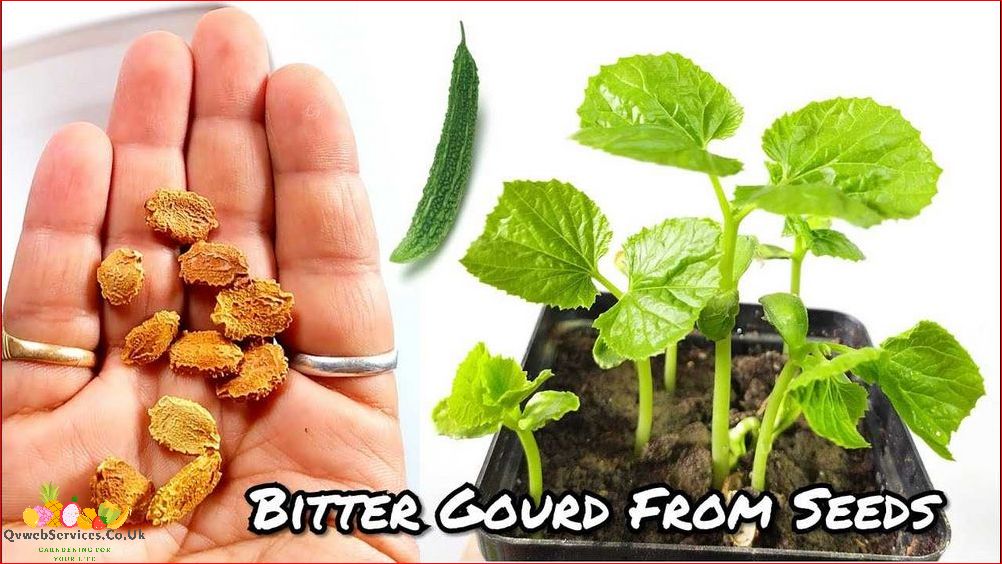
Bitter gourd, also known as bitter melon or karela, is a tropical vegetable that is popular in many Asian cuisines. It is known for its unique bitter taste and numerous health benefits. If you are interested in growing your own bitter gourd, this article will provide you with all the information you need to get started.
First and foremost, it is important to choose the right variety of bitter gourd for your growing conditions. Bitter gourd plants require a warm and humid climate, so if you live in a colder region, you may need to grow them in a greenhouse or indoors. There are many different varieties of bitter gourd available, so do some research to find the one that is best suited to your climate and preferences.
Once you have chosen the variety, you will need to prepare the soil for planting. Bitter gourd plants prefer well-draining soil that is rich in organic matter. You can improve the soil by adding compost or well-rotted manure. It is also a good idea to test the pH of the soil and adjust it if necessary. Bitter gourd plants prefer a slightly acidic soil with a pH between 6.0 and 6.5.
When it comes to planting bitter gourd seeds, it is best to start them indoors about 4-6 weeks before the last frost date. This will give the plants a head start and ensure that they have enough time to mature before the end of the growing season. Plant the seeds about 1 inch deep and keep the soil consistently moist until the seeds germinate. Once the seedlings have grown a few inches tall, you can transplant them into the garden.
Climate and Soil Requirements

Bitter gourd, also known as bitter melon, thrives in warm and humid climates. It is a tropical and subtropical plant that requires a temperature range of 25-35°C (77-95°F) for optimal growth. The plant is sensitive to frost and cannot tolerate temperatures below 10°C (50°F).
In terms of rainfall, bitter gourd prefers a moderate amount of water. It requires an average annual rainfall of 1000-1500 mm (39-59 inches). However, excessive rainfall can lead to waterlogging and root rot, so it is important to ensure proper drainage in the soil.
When it comes to soil, bitter gourd prefers well-drained sandy loam or loamy soil. The pH level of the soil should be slightly acidic to neutral, ranging from 6.0 to 7.0. The soil should also be rich in organic matter and have good water-holding capacity.
It is important to note that bitter gourd is a climbing vine, so it requires support for its growth. Trellises or stakes can be used to provide support and help the plant climb.
By providing the right climate and soil conditions, you can ensure the healthy growth of bitter gourd and enjoy a bountiful harvest of this nutritious vegetable.
Choosing and Preparing Seeds
Choosing the right seeds is essential for growing healthy and productive bitter gourd plants. Here are some tips to help you select and prepare your seeds:
- Choose fresh seeds: Look for seeds that are plump, firm, and free from any signs of damage or decay. Fresh seeds have a higher germination rate, which means they are more likely to sprout and grow into healthy plants.
- Consider the variety: Bitter gourd comes in different varieties, each with its own unique characteristics. Consider factors such as taste, size, and disease resistance when choosing a variety that suits your preferences and growing conditions.
- Buy from a reputable source: Purchase your bitter gourd seeds from a reliable supplier or seed company. This ensures that you are getting high-quality seeds that have been properly stored and handled.
- Prepare the seeds: Before sowing, it is recommended to soak the bitter gourd seeds in water for 24 hours. This helps to soften the seed coat and improve germination. After soaking, drain the water and allow the seeds to dry on a paper towel for a few hours.
- Perform a germination test: To ensure the viability of your seeds, you can conduct a germination test before planting. Place a few seeds on a damp paper towel and keep it in a warm location. Check after a few days to see how many seeds have sprouted. This will give you an idea of the germination rate and help you determine how many seeds to sow.
By following these tips, you can increase your chances of success when growing bitter gourd from seeds. Remember to provide the seeds with proper care and attention throughout the germination and growing process.
Planting Bitter Gourd
When it comes to planting bitter gourd, there are a few key steps to follow to ensure success. Here are some tips to help you get started:
1. Choose the right location: Bitter gourd plants thrive in warm and sunny locations, so choose a spot in your garden that receives full sunlight for at least 6-8 hours a day. Ensure that the soil is well-draining and rich in organic matter.
2. Prepare the soil: Before planting, prepare the soil by loosening it with a garden fork or tiller. Remove any weeds or rocks and incorporate compost or well-rotted manure to improve the soil’s fertility.
3. Start seeds indoors: Bitter gourd seeds can be started indoors 4-6 weeks before the last frost date. Plant the seeds in seed trays or pots filled with seed starting mix. Keep the soil moist and warm, around 70-85°F (21-29°C), and provide adequate light for germination.
4. Transplant seedlings: Once the seedlings have developed a few true leaves and the danger of frost has passed, they can be transplanted into the garden. Space the seedlings about 12-18 inches apart to allow for proper growth and air circulation.
5. Provide support: Bitter gourd plants are vigorous climbers, so it’s important to provide them with a trellis or support structure. This will help keep the vines off the ground, prevent diseases, and make harvesting easier.
6. Water and fertilize: Bitter gourd plants require regular watering, especially during dry periods. Keep the soil evenly moist, but not waterlogged. Fertilize the plants every 2-3 weeks with a balanced organic fertilizer to promote healthy growth.
7. Control pests and diseases: Bitter gourd plants can be susceptible to pests like aphids, whiteflies, and fruit flies. Monitor your plants regularly and take appropriate measures to control these pests. Additionally, provide good air circulation and avoid overhead watering to prevent fungal diseases.
8. Harvesting: Bitter gourds can be harvested when they are still green and tender, usually around 60-70 days after planting. Use a sharp knife or pruning shears to cut the fruits from the vine. Be careful not to damage the vines or other fruits while harvesting.
By following these planting tips, you can successfully grow bitter gourd in your garden and enjoy its unique flavor and health benefits.
Watering and Fertilizing
Proper watering and fertilizing are essential for the successful growth of bitter gourd plants. Here are some tips to help you ensure that your plants receive the right amount of water and nutrients:
Watering:
1. Bitter gourd plants require consistent moisture, especially during the growing season. Water the plants deeply and thoroughly, ensuring that the soil is evenly moist.
2. Avoid overwatering, as it can lead to root rot and other diseases. Allow the top few inches of soil to dry out before watering again.
3. Water the plants in the morning or evening to minimize water loss due to evaporation.
4. Use a drip irrigation system or a watering can with a narrow spout to direct the water at the base of the plants, avoiding wetting the foliage.
Fertilizing:
1. Bitter gourd plants are heavy feeders and require regular fertilization. Use a balanced organic fertilizer or a slow-release granular fertilizer formulated for vegetables.
2. Apply the fertilizer according to the package instructions, usually every 2-3 weeks during the growing season.
3. Avoid over-fertilizing, as it can lead to excessive foliage growth at the expense of fruit production.
4. Mulch around the base of the plants with organic matter, such as compost or straw, to help retain moisture and provide a slow release of nutrients.
By following these watering and fertilizing guidelines, you can help your bitter gourd plants thrive and produce a bountiful harvest.
Trellising and Supporting
One important aspect of growing bitter gourd is providing proper support and trellising. Bitter gourd plants are vigorous climbers and require a sturdy structure to grow on. Trellising not only helps to support the weight of the plant, but also allows for better air circulation and sunlight exposure, resulting in healthier plants and higher yields.
Choosing the Right Trellis
When selecting a trellis for bitter gourd, it is important to consider the height and strength of the structure. Bitter gourd plants can grow up to 6-8 feet tall, so the trellis should be at least that height to accommodate their growth. Additionally, the trellis should be strong enough to withstand the weight of the plants, especially when they are fully grown and bearing fruit.
There are various types of trellises that can be used for bitter gourd, including bamboo poles, wire mesh, or nylon netting. Whichever type you choose, make sure it is securely anchored in the ground to prevent it from falling over or collapsing under the weight of the plants.
Training the Plants
Once you have set up the trellis, it is important to train the bitter gourd plants to climb up the structure. This can be done by gently tying the main stem of the plant to the trellis using soft plant ties or twine. As the plant grows, continue to tie the side branches to the trellis to encourage vertical growth.
Regularly check the plants and adjust the ties as necessary to prevent them from becoming too tight and constricting the growth of the plant. It is also important to prune any lateral shoots or suckers that may develop, as they can hinder the upward growth of the plant and reduce fruit production.
By providing proper trellising and support, you can ensure that your bitter gourd plants grow healthy and produce an abundant harvest.
Pruning and Training
Pruning and training are essential for growing bitter gourd plants successfully. By pruning and training the vines, you can control their growth and improve fruit production. Here are some tips on how to prune and train your bitter gourd plants:
1. Pruning
Pruning helps to remove excessive growth and maintain the shape and size of the plant. It also promotes air circulation and reduces the risk of diseases. You should prune your bitter gourd plants regularly to remove any dead or diseased leaves, branches, or tendrils. Use clean and sharp pruning shears to make clean cuts and avoid damaging the plant.
When pruning, focus on removing the lateral shoots that emerge from the leaf axils. These shoots can divert energy from the main vine and reduce fruit production. You can also remove any suckers that grow from the base of the plant to maintain a single main stem.
2. Training
Training involves guiding the vines to grow in a specific direction and supporting them as they grow. This helps to prevent the vines from sprawling on the ground and keeps the plant more compact, making it easier to manage and harvest.
You can train bitter gourd vines to grow vertically on trellises or support structures. Use soft twine or plant ties to gently secure the vines to the trellis or support. As the vines grow, continue to guide them upwards, ensuring they are well supported and don’t become tangled or weighed down.
Regularly check the vines and adjust their position as needed. Avoid excessive bending or twisting of the vines, as this can cause damage. It’s also important to provide enough space between the vines and the trellis or support structure to allow air circulation and prevent the spread of diseases.
By pruning and training your bitter gourd plants, you can create a well-organized and productive garden. Remember to be gentle when handling the vines and always use clean tools to prevent the spread of diseases. With proper care and attention, you’ll be rewarded with a bountiful harvest of bitter gourds.
Controlling Pests and Diseases
When growing bitter gourd, it is important to be aware of the potential pests and diseases that can affect the plant. Here are some common pests and diseases that you may encounter and how to control them:
Pests:
- Aphids: These small insects can suck the sap from the leaves and stems of the bitter gourd plant. To control aphids, you can spray the plant with a mixture of water and dish soap or use an insecticidal soap.
- Whiteflies: These tiny insects can cause damage by sucking the sap from the leaves and transmitting diseases. To control whiteflies, you can use yellow sticky traps or apply neem oil to the affected areas.
- Spider mites: These pests are known for causing yellowing and wilting of leaves. To control spider mites, you can spray the plant with water or use an insecticidal soap.
- Snails and slugs: These pests can chew on the leaves and fruits of the bitter gourd plant. To control snails and slugs, you can handpick them or use organic slug pellets.
Diseases:

- Powdery mildew: This fungal disease appears as a white powdery substance on the leaves. To control powdery mildew, you can spray the plant with a mixture of water and baking soda or use a fungicide.
- Downy mildew: This disease causes yellowing and wilting of leaves. To control downy mildew, you can apply a copper-based fungicide or remove and destroy the infected plants.
- Leaf spot: This disease causes dark spots on the leaves. To control leaf spot, you can remove and destroy the infected leaves or use a copper-based fungicide.
- Root rot: This disease affects the roots and can cause wilting and stunted growth. To control root rot, you can improve drainage in the soil and avoid overwatering the plant.
Regularly inspecting your bitter gourd plants and taking prompt action against pests and diseases can help ensure a healthy and productive harvest.
Harvesting Bitter Gourd
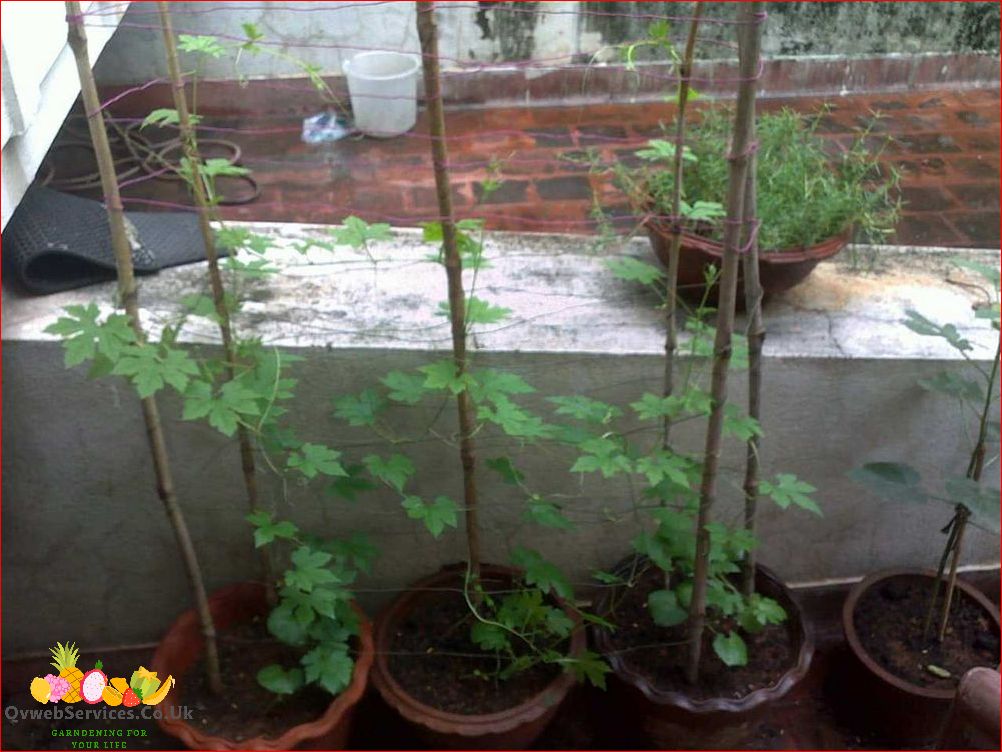
Harvesting bitter gourd is an important step in growing this vegetable. Knowing when and how to harvest bitter gourd can ensure that you get the best flavor and texture from your crop. Here are some tips to help you harvest bitter gourd:
- Check the size: Bitter gourds are usually ready to be harvested when they reach a length of 4 to 6 inches. They should also have a bright green color and a firm texture.
- Use a sharp knife or pruning shears: To harvest bitter gourd, use a sharp knife or pruning shears to cut the fruit from the vine. Be careful not to damage the vine or other fruits while doing so.
- Harvest regularly: Bitter gourds should be harvested regularly to encourage the plant to produce more fruits. Check your plants every 2 to 3 days and harvest any ripe bitter gourds that you find.
- Handle with care: Bitter gourds have a delicate skin that can easily bruise or get damaged. Handle them with care while harvesting and avoid dropping or throwing them.
- Store properly: After harvesting bitter gourds, store them in a cool and dry place. They can be kept in the refrigerator for up to a week. If you have a large harvest, you can also freeze bitter gourds for later use.
By following these tips, you can ensure a successful bitter gourd harvest and enjoy the fresh and bitter taste of this unique vegetable.
Storing Bitter Gourd
Once you have harvested bitter gourd from your garden, it is important to store it properly to ensure its freshness and longevity. Follow these tips to store bitter gourd:
1. Cleaning
Before storing bitter gourd, make sure to clean it thoroughly. Rinse it under cold water to remove any dirt or debris. Pat it dry with a clean towel to remove excess moisture.
2. Refrigeration
Bitter gourd can be stored in the refrigerator to extend its shelf life. Wrap the bitter gourd in a paper towel and place it in a plastic bag. Make sure to remove any air from the bag before sealing it. Store it in the vegetable crisper drawer of your refrigerator.
It is important to note that bitter gourd is sensitive to cold temperatures, so it should not be stored at a temperature below 50°F (10°C). Keep it at a slightly higher temperature to prevent chilling injury.
3. Freezing
If you have a surplus of bitter gourd, you can also freeze it for later use. Start by blanching the bitter gourd in boiling water for 2-3 minutes. Then, transfer it to an ice bath to stop the cooking process. Drain the bitter gourd and place it in a freezer-safe container or bag. Label it with the date and store it in the freezer.
When you are ready to use the frozen bitter gourd, thaw it in the refrigerator overnight before cooking.
By following these storage methods, you can enjoy the freshness of bitter gourd for a longer period of time.
Culinary Uses and Recipes
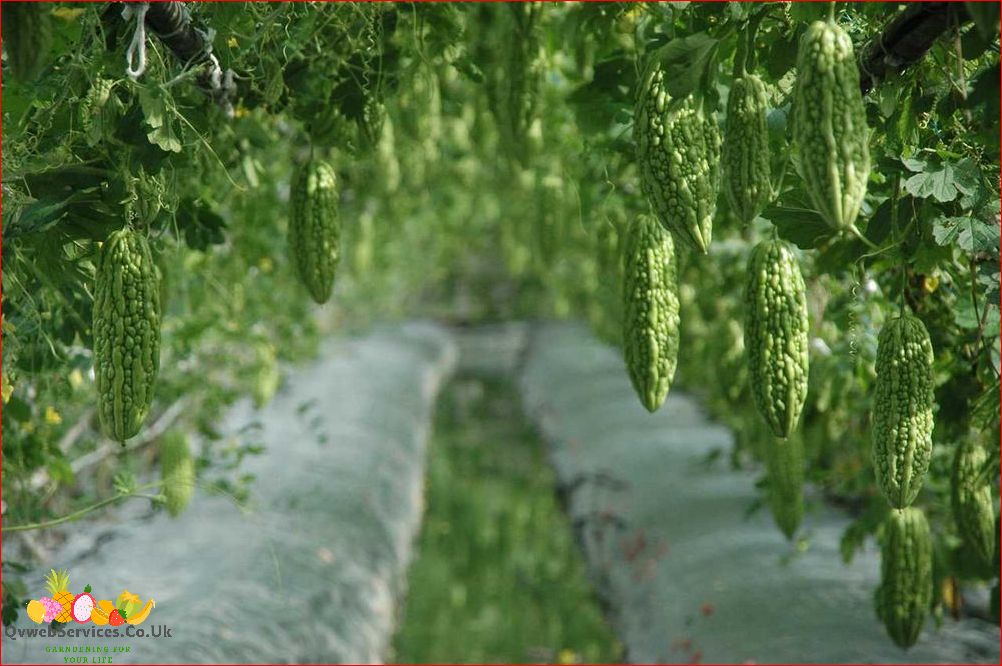
Bitter gourd, also known as bitter melon or karela, is a versatile vegetable that is widely used in various cuisines around the world. Although its bitter taste may not be appealing to everyone, bitter gourd is highly valued for its numerous health benefits and unique flavor.
Health Benefits
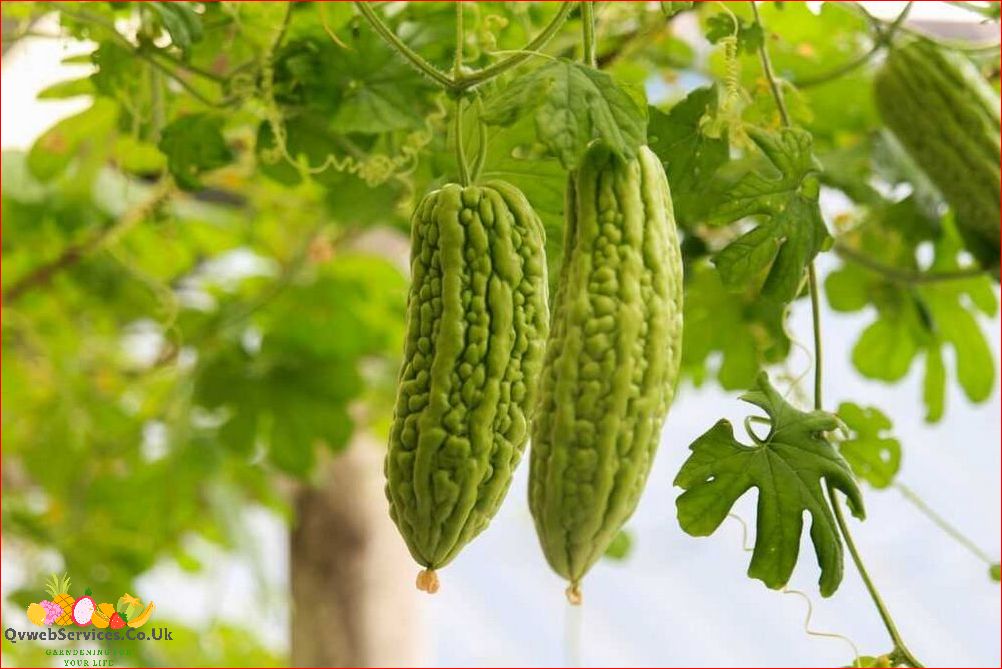
Bitter gourd is known for its medicinal properties and is often used in traditional medicine to treat various ailments. It is rich in vitamins A, C, and E, as well as minerals like potassium and calcium. Bitter gourd is also a great source of dietary fiber and antioxidants, which help in detoxifying the body and improving digestion.
Furthermore, bitter gourd is believed to have anti-inflammatory properties and can help in managing diabetes by regulating blood sugar levels. It is also known to boost the immune system and promote healthy skin and hair.
Culinary Uses
Bitter gourd can be cooked in a variety of ways to reduce its bitter taste and enhance its flavor. One popular method is to soak the sliced bitter gourd in saltwater for about 30 minutes before cooking. This helps to reduce the bitterness and make it more palatable.
Bitter gourd is often used in stir-fries, curries, and soups. It can be sautéed with spices and other vegetables or stuffed with a mixture of ground meat and spices. Bitter gourd can also be pickled or used in salads for a refreshing and tangy taste.
Here are a few recipes that showcase the culinary uses of bitter gourd:
- Bitter Gourd Stir-Fry: Heat oil in a pan and add sliced bitter gourd, onions, and garlic. Sauté until the bitter gourd is tender. Season with salt, pepper, and your choice of spices. Serve hot with rice or bread.
- Bitter Gourd Curry: In a saucepan, heat oil and add chopped bitter gourd, tomatoes, and spices like turmeric, cumin, and coriander. Cook until the bitter gourd is soft and the flavors are well blended. Serve with roti or naan.
- Bitter Gourd Salad: Slice bitter gourd thinly and marinate in a mixture of lemon juice, salt, and sugar for about 15 minutes. Add chopped tomatoes, onions, and cilantro. Toss well and serve as a refreshing side dish.
Experiment with different recipes and cooking methods to find the one that suits your taste buds. Bitter gourd may be an acquired taste, but its health benefits and unique flavor make it worth trying!
Health Benefits of Bitter Gourd
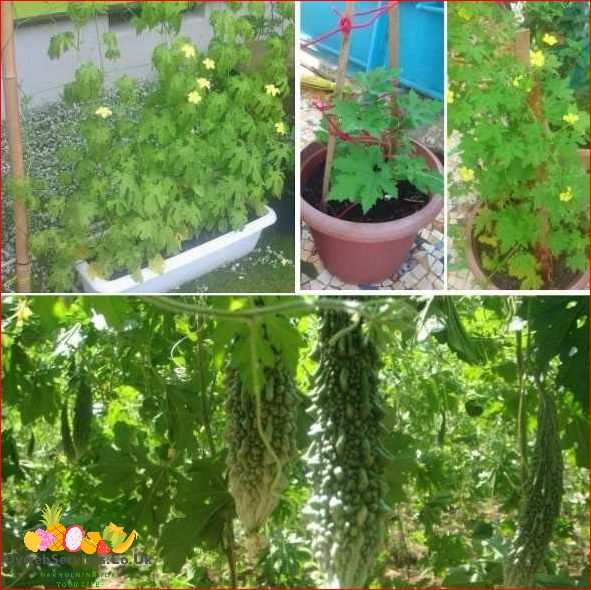
Bitter gourd, also known as bitter melon, is a vegetable that is packed with numerous health benefits. Despite its bitter taste, bitter gourd is highly nutritious and can be a valuable addition to your diet. Here are some of the health benefits of bitter gourd:
1. Rich in Nutrients: Bitter gourd is a good source of vitamins A, C, and E, as well as minerals like potassium, magnesium, and iron. It also contains dietary fiber, which aids in digestion and helps maintain a healthy digestive system.
2. Manages Diabetes: Bitter gourd has long been used as a natural remedy for diabetes. It contains compounds that help lower blood sugar levels by increasing insulin secretion and improving insulin sensitivity. Regular consumption of bitter gourd can help manage diabetes and prevent complications associated with the disease.
3. Boosts Immunity: Bitter gourd is rich in antioxidants, which help protect the body against damage from harmful free radicals. These antioxidants strengthen the immune system and reduce the risk of infections and diseases.
4. Supports Weight Loss: Bitter gourd is low in calories and high in fiber, making it an excellent choice for weight loss. The fiber content helps keep you feeling full for longer, reducing your overall calorie intake. It also aids in digestion and promotes a healthy metabolism.
5. Improves Skin Health: The antioxidants present in bitter gourd help improve skin health by fighting off free radicals and reducing oxidative stress. Regular consumption of bitter gourd can help prevent skin problems like acne, blemishes, and wrinkles, giving you a healthy and glowing complexion.
6. Promotes Heart Health: Bitter gourd is beneficial for heart health due to its high potassium content. Potassium helps maintain healthy blood pressure levels and reduces the risk of heart disease. Bitter gourd also contains compounds that help lower cholesterol levels, further protecting the heart.
7. Enhances Liver Function: Bitter gourd has been used in traditional medicine to improve liver health. It contains compounds that help detoxify the liver and promote its proper functioning. Regular consumption of bitter gourd can help protect the liver from damage and improve overall liver health.
Incorporating bitter gourd into your diet can provide you with these amazing health benefits. Whether you consume it raw, cooked, or in the form of supplements, bitter gourd can be a valuable addition to your overall well-being.
Video:Guide to Growing Bitter Gourd: Tips and Techniques
As Stephanie C. Phillips, I am the voice and green thumb behind QvWebServices.co.uk. My passion for gardening and sharing my knowledge with others has led me to create a space where fellow gardening enthusiasts can find practical advice and inspiration.
From the sun-soaked fields of Texas to the cozy balconies of city dwellers, I strive to guide you through the nuances of growing your own food and beautifying your surroundings with plants. My articles are a reflection of my dedication to the art of gardening, and I hope they encourage you to get your hands dirty and enjoy the rewards of nurturing life from the soil.
Join me on this verdant journey to cultivate not just gardens, but a sense of community and connection to the earth.

